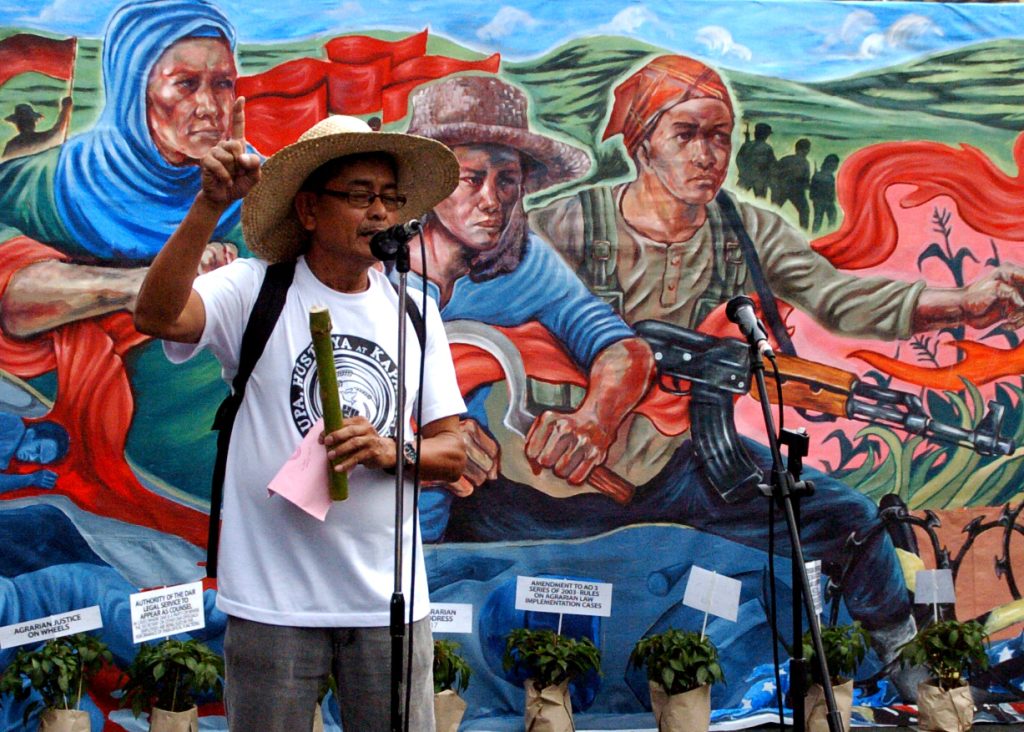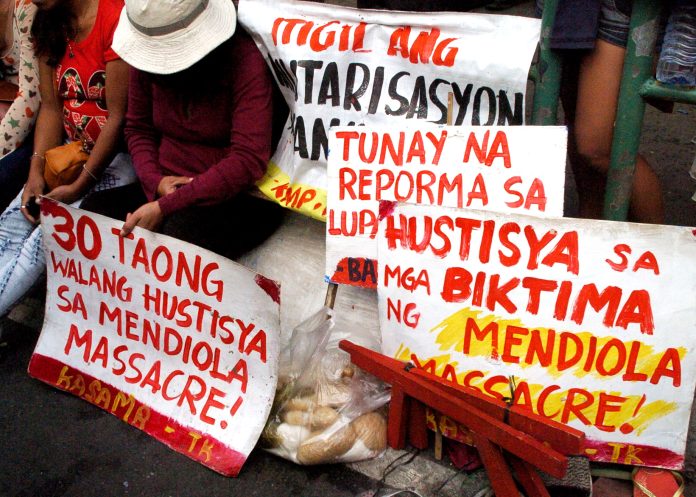“It seemed to have only happened yesterday,” said Danilo Ramos.
The explosions, the teargas, the bullets, the blood, and the cries for help were still fresh in his mind.
His youngest child was born only a few months before the massacre happened. The baby is now 35 years old.
Ramos is now chairperson of the country’s biggest peasant movement.
“Nothing seems to have changed,” he said.
On Jan. 22, 1987, tens of thousands of farmers marched outside the gates of the presidential palace in Manila to demand the distribution of land from the then newly-installed administration of the late Corazon Aquino.
Upon reaching the foot of Mendiola Bridge that links the heart of the city to the palace, anti-riot personnel, policemen, and Marines opened fire on the more than 20,000 farmers and their supporters.
After the shooting, 13 farmers lay dead while more than 80 others were wounded.
Ray Panaligan was an 18-year-old activist who was marching at the edge of the crowd.
“We could hardly breath as we ran toward a cloud of tear gas…. It was the logical choice, or be arrested, or worse get shot,” said Panaligan, now a photojournalist.
Peasant activists said the so-called Mendiola Massacre showed that the response of Corazon Aquino’s government to peasant demands for land reform was no different than that of her predecessor, the ousted dictator Ferdinand Marcos.
In the intervening years, the country’s poor farmers “have been continually denied the promise of land to the tiller,” read a statement from the International Coalition for Human Rights in the Philippines (ICHRP).
The group noted that every time poor farmers attempt to pursue their claims for land reform, they are attacked by state security forces and goons.
The government of Corazon Aquino came to power on the coat tails of the popular 1986 “People Power” uprising against Marcos.
When she was campaigning against the dictator, Aquino was critical of the Marcos agrarian reform program, calling a “mockery” and not “genuine.”

During her term as president, however, Aquino made no progress in the agrarian reform front, leaving to the landlord-dominated Congress the decision on the issue.
Street protests led by the Kilusang Magbubukid sa Pilipinas started on Jan. 15, 1987, when the farmers camped outside the offices of the Ministry of Agrarian Reform in Quezon City.
Among their demands were land to the tiller with no compensation and zero retention limits for landlords.
The lack of progress on their demands for land reform eventually led to the march to the presidential palace in Manila. They had marched to within about 50 meters of police and military lines, when the soldiers opened fire.
More than three decades later, peasant leader Antonio Flores said “justice remains elusive for the victims” of the massacre.
“The free distribution of lands was our demand and the government’s response was a rain of bullets and a bogus land reform,” he said. “Until now, the vast majority of farmers are landless.”
Human rights groups said that 35 years later, the administration of President Rodrigo Duterte “has perpetuated violence against peasants and peasant advocates.”
“The entirety of his almost six-year repressive regime has seen widespread human rights violations perpetrated by security forces under Duterte’s “shoot-to-kill” and arbitrary arrest policies,” read the ICHRP statement.
Human rights group Karapatan reported that over 23,000 people killed in the government’s “war on drugs” and over 1,000 civilians killed in the armed conflict in Mindanao.
As of August 2021, there have been 421 extrajudicial killings and up to June 2021 there have been no less than 25 massacres, claimed Karapatan.









